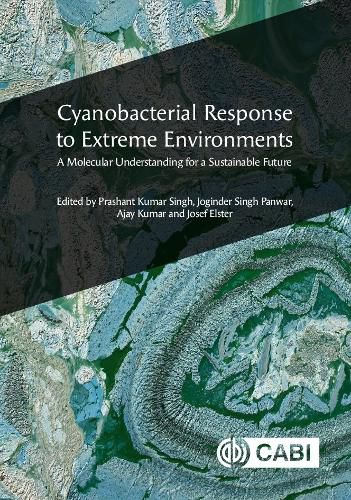Readings Newsletter
Become a Readings Member to make your shopping experience even easier.
Sign in or sign up for free!
You’re not far away from qualifying for FREE standard shipping within Australia
You’ve qualified for FREE standard shipping within Australia
The cart is loading…






Cyanobacteria are the oldest living organisms on Earth, going back to the Precambrian era and the planet's early harsh climate. Cyanobacteria inhabit almost all environmental niches. These prokaryotes were critical to the formation of the current biosphere as they evolved photosynthetic reactions emitting oxygen similar to those of plants and green algae. They continue to contribute to the equilibrium of the Earth's atmosphere by generating oxygen and eliminating carbon dioxide. In addition, heterocystous cyanobacteria (specialized nitrogen-fixing cells formed during nitrogen starvation) contribute to atmospheric nitrogen fixation. Therefore, cyanobacteria have tremendous potential for biotechnological applications. Cyanobacteria have evolved specific regulatory mechanisms to cope with environmental stresses and/or variable environments, such as high altitude, extreme cold, hot water and springs, and volcanic ash. However, cyanobacterial adaptation mechanisms to environmental extremes have been poorly addressed, despite their ubiquitous presence in such ecological extremes. Over the last decade, remarkable progress has been made to uncover cyanobacterial adaptation to various abiotic stresses such as high irradiance, nutritional deprivation, UV-B radiation, heat, cold, desiccation, heavy metals, and radiation. These studies must lead the way to a basic understanding of cyanobacterial gene regulatory pathways for morphological, physiological, metabolic, and genetic adaptations to environmental stress. Unfortunately, until now, this information has been scattered in the literature. This book reviews and provides an up-to-date snapshot of where current research stands, as well as discussing the different aspects of cyanobacterial adaptation to extreme environments and their potential for biotechnological exploitation and future research. This book is aimed at researchers and graduate students involved in any aspect of research into cyanobacteria, extreme environments and the exploitation of these organisms in biotechnological applications.
$9.00 standard shipping within Australia
FREE standard shipping within Australia for orders over $100.00
Express & International shipping calculated at checkout
Stock availability can be subject to change without notice. We recommend calling the shop or contacting our online team to check availability of low stock items. Please see our Shopping Online page for more details.
Cyanobacteria are the oldest living organisms on Earth, going back to the Precambrian era and the planet's early harsh climate. Cyanobacteria inhabit almost all environmental niches. These prokaryotes were critical to the formation of the current biosphere as they evolved photosynthetic reactions emitting oxygen similar to those of plants and green algae. They continue to contribute to the equilibrium of the Earth's atmosphere by generating oxygen and eliminating carbon dioxide. In addition, heterocystous cyanobacteria (specialized nitrogen-fixing cells formed during nitrogen starvation) contribute to atmospheric nitrogen fixation. Therefore, cyanobacteria have tremendous potential for biotechnological applications. Cyanobacteria have evolved specific regulatory mechanisms to cope with environmental stresses and/or variable environments, such as high altitude, extreme cold, hot water and springs, and volcanic ash. However, cyanobacterial adaptation mechanisms to environmental extremes have been poorly addressed, despite their ubiquitous presence in such ecological extremes. Over the last decade, remarkable progress has been made to uncover cyanobacterial adaptation to various abiotic stresses such as high irradiance, nutritional deprivation, UV-B radiation, heat, cold, desiccation, heavy metals, and radiation. These studies must lead the way to a basic understanding of cyanobacterial gene regulatory pathways for morphological, physiological, metabolic, and genetic adaptations to environmental stress. Unfortunately, until now, this information has been scattered in the literature. This book reviews and provides an up-to-date snapshot of where current research stands, as well as discussing the different aspects of cyanobacterial adaptation to extreme environments and their potential for biotechnological exploitation and future research. This book is aimed at researchers and graduate students involved in any aspect of research into cyanobacteria, extreme environments and the exploitation of these organisms in biotechnological applications.